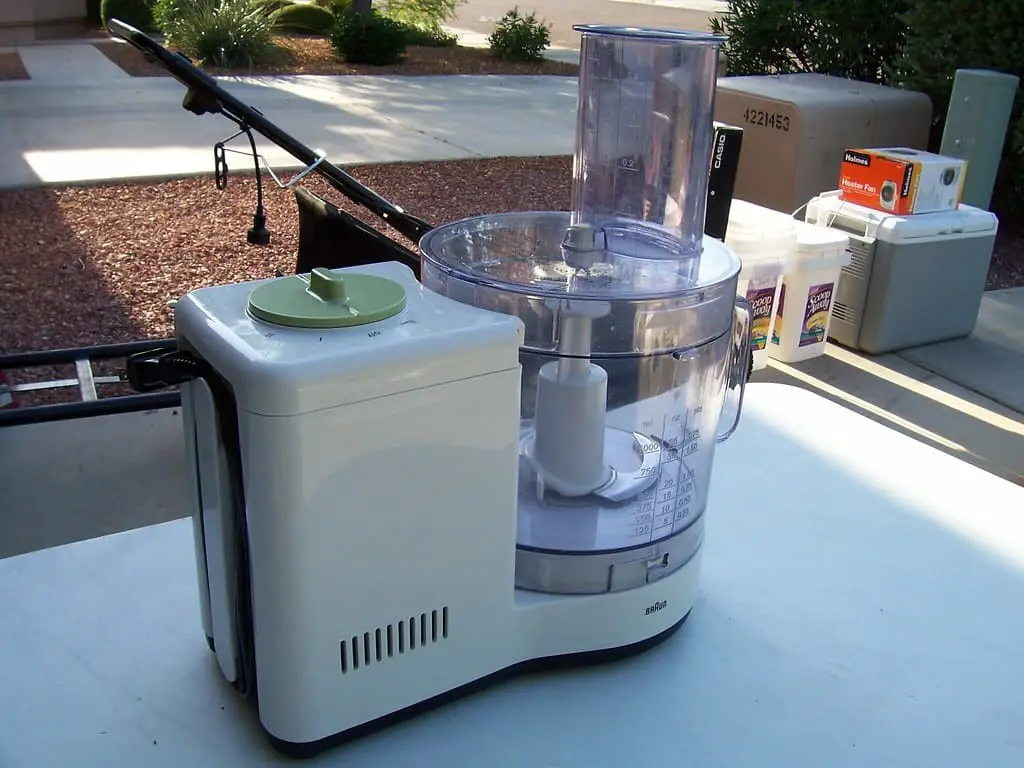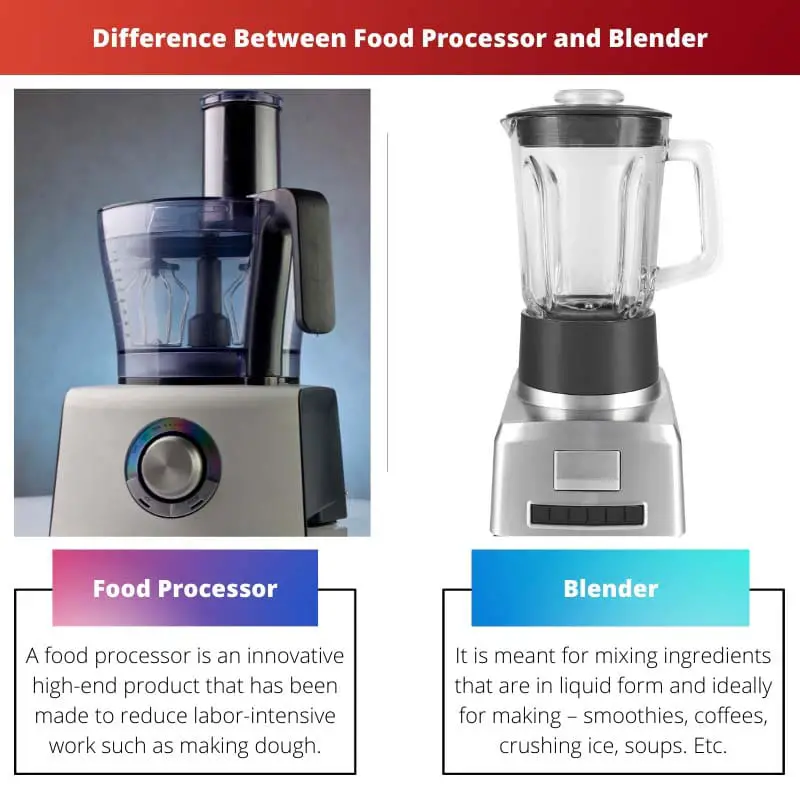Over time new technologies have captured every possible market worldwide. Innovations and technologies are made to lessen the hard work performed by the person.
One such is the new modern kitchen appliances that are manufactured and sold in the market. Some are microwaves, mixer grinders, blenders, food processors, non-stick kitchenware, refrigerator, and many more.
The above appliances have been very useful for individuals, and two of them are – Food processors and Blenders.
Key Takeaways
- A food processor is designed for chopping, slicing, and shredding food, while a blender is designed for pureeing and liquefying ingredients.
- Food processors come with interchangeable blades and attachments for different food processing tasks, while blenders have a fixed blade assembly for blending ingredients.
- Food processors are better suited for food preparation tasks such as chopping vegetables, while blenders are better for making smoothies and pureeing soups.
Food Processor vs Blender
The difference between Food Processor and Blender is that a Food processor is meant for grinding, chopping, and shredding vegetables and fruits. Additionally, they have many other functions to perform, such as – mixing dough, emulsifying spices, etc. Whereas comparatively, on the other hand, the Blender is meant for crushing, making purees, etc. They also have large bowls with different sizes blades.

A food processor is an innovative high-end product made to reduce labour-intensive work such as dough-making.
The product has four main parts: the base, lid, detachable blades, and body. It also comes with a bowl with a wide space ideal for properly mixing ingredients.
Blender is one of the basic products that can be found in most kitchens. It is meant for mixing ingredients that are in liquid form and ideally for making – smoothies, coffees, crushing ice, and soups. Etc.
It consists of four parts that constitute it as a whole: the lid, base, blades, and pitcher. Unlike a food processor, it doesn’t have wide bowls for mixing ingredients.
Comparison Table
| Parameters of Comparison | Food Processor | Blender |
|---|---|---|
| Different Parts | Lid, base, detachable blades, and body | Lid, base (with motor), blades, and pitcher |
| Energy Consumption | 0.36 kWh to 2.88 kWh | 0.4 kWh |
| Bowls | Large | Small |
| Blades | Detachable and are sharp | Detachable and blunt |
| Uses | Chopping, shredding, mixing, grinding | Crushing, making puree, blending, grinding |
| Price | High | Less |
What is Food Processor?
Food Processor is one kitchen appliance that runs on electricity and lies in the countertop appliance series.
The appliance is considered to be multipurpose as it performs many tasks and focuses on work that includes some labour work. The appliance is best for making recipes that include ingredients with some thickness.
These are – mixing dough, chopping vegetables, shredding cheese, etc.
It is constituted of four different parts that make it up as a whole: the lid, the base, the body, and the detachable blades.
It also comprises different bowls that come up with it, which are very spacious and is ideal for mixing the raw ingredients and blending them. The lid of the processor has space over the top that helps the person to add ingredients while blending.
Over the base is present the control options for speed and pulse. As it constitutes different blades, unlike blenders, they perform different tasks like – shredding, chopping, slicing, mixing, grating, etc.
They are best suited for making a large proportion of recipes.
No products found.

What is Blender?
Blender is also one of the members of basic kitchen products that can be found in many houses. The appliance runs on electricity and is among the countertop appliance lists.
Unlike, the Food processor blender is not a multi-functional appliance, although it is meant for mixing the ingredients that are liquid in the state.
It is considered best for making recipes with liquid ingredients for – smoothies, cocktails, coffees, soups, and many others.
The appliance comprises four parts that make it up a whole one: lid, blades, pitcher, and base (along with motor).
The blades eventually blend all the liquid and solid ingredients with perfection without leaving any lumps behind.
Over the base, it contains the power controls of the blender. The power consumption used by a blender is about 0.4 kWh. Unlike in a food processor, the blades constituted with a blender are blunt. The price range of the appliance is low.
No products found.

Main Differences Between Food Processor and Blender
- The kitchen appliance food processor consists of four different parts that make it up as one complete unit, and that is the lid, the base of the food processor, the different detachable blades for different purposes, and the body made up of plastic, whereas comparatively, on the other hand, the blender is also made up of four different parts that are assembled to make it one unit and they are – lid, the base of the appliance, different blades, and the pitcher.
- The energy consumption for using a food processor may lie between the range of 0.36 kWh to 2.88 kWh, whereas comparatively, on the other hand, the energy consumption for using a blender is about 0.4 kWh.
- The food processor has a large spacious bowl included with it, whereas comparatively, on the other hand, the blender has a small bowl accompanying it.
- The different blades present in the food processor are detachable and sharp, whereas comparatively, on the other hand, the different blades present in the blender are detachable and blunt (not as sharp as in the food processor).
- The price for any food processor in the market is quite high, whereas comparatively, on the other hand, the price for any blender in the market is low.
- The uses of a food processor are used for shredding, grinding, chopping, mixing, etc., whereas comparatively, on the other hand, the use of a blender is used for crushing, grinding, and making puree.




